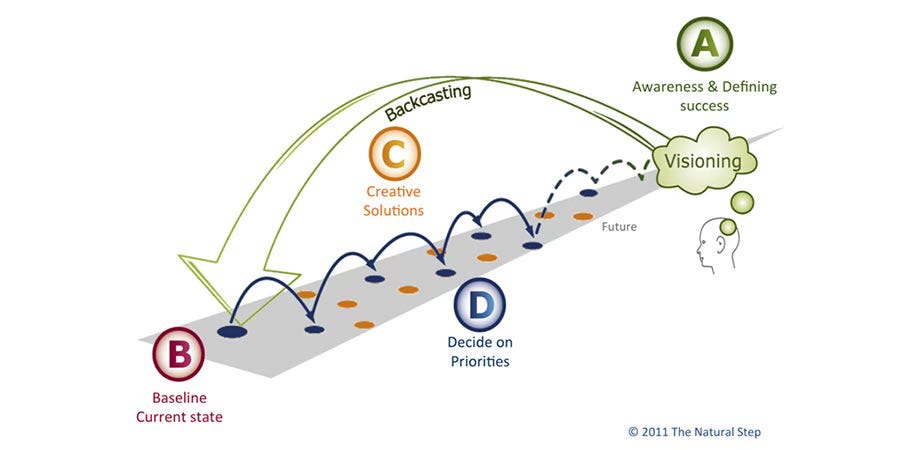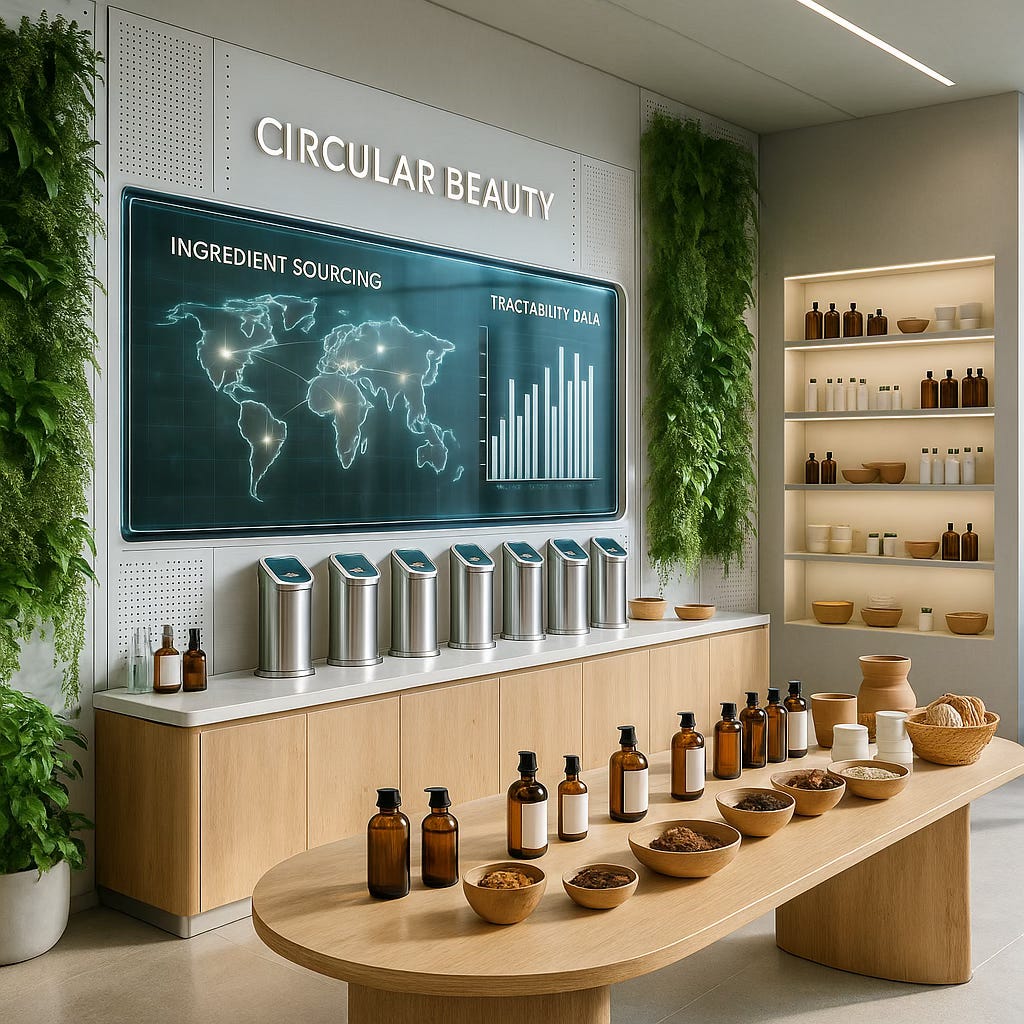Hello Futurist,
If you work in strategy or trends, you’ve probably felt it too: the cycles keep getting shorter, the pace keeps getting faster, and the pressure to predict what’s next grow stronger. Forecasting starts in the now. We look for trends, track shifts, and prepare for what might be coming. But when the goal is to shape a future that feels intentional sometimes we need to flip the process.
What if we began with a vision of the future? Clear, bold, values-driven. And then worked our way back to the present. That’s the approach we’re taking today, as we imagine what a regenerative beauty industry could look like and how we might begin to build it.
Here’s what’s inside this issue:
The Tool: backcasting, a futures method that begins with vision and builds a roadmap back to today.
Step Into the Future: we imagine beauty in 2035 as a circular ecosystem of care, and map the big shifts needed to get there.
Back to the Present: from vision to action, what needs to start now, and who needs to lead the change?
THE TOOL
✦ What Are We Talking About? ✦
Backcasting is a strategic foresight method that flips the script on traditional planning. The term was first introduced by John B. Robinson in the 1980’s and is particularly useful when current trends contribute to the problem at hand.
Instead of projecting the present into the future, backcasting starts by envisioning a desirable future and then works backward to identify the steps needed to achieve that future.
✦ How It Works ✦
While the process is straightforward, getting real value from this tool requires time, depth, and participation from a diverse group of voices. The magic of backcasting happens in the conversations it sparks, the assumptions it challenges, and the creative pathways it opens up when people build the future together.
Here are the basic steps:
Define a desired future: clearly articulate a specific, aspirational scenario.
Assess the current situation: understand where things stand today in relation to that vision. What’s in the way? What needs to change?
Identify the steps backwards: work backward from the future to map key milestones or shifts that would need to occur to get there.
Develop strategies: define what needs to happen now (policies, investments, collaborations) to start moving in that direction.
Done well, backcasting turns vision into momentum.
✦ Why It Matters ✦
For professionals and strategists, backcasting is a valuable way to think long-term:
It helps us set a clear future goal and figure out how to get there, rather than just reacting to whatever comes next.
It pushes creative thinking, because we’re not limited by today’s constraints, we’re starting with what we wish for and working backward.
It supports better decisions and policies, because it keeps our actions aligned with the bigger picture.
And maybe most importantly, it encourages collaboration. It brings together different teams, communities, and perspectives to imagine what’s possible and map the way forward.
In short: backcasting helps us plan with intention, not just adapt to change.
STEP INTO THE FUTURE
Before we dive in, a quick note:
An exercise like this, envisioning the future and working our way backward, is best done collectively. It helps bring together different voices from across an ecosystem to build a shared vision, and highlight the real-world tensions, blind spots, and levers of power that each actor holds.
But for the sake of this newsletter, I’ve done the exercise solo.
So as you read, I invite you to bring your own lens to it, add, question, imagine. You’ll likely spot things I’ve missed, or bring insights I couldn’t see from where I sit. And that’s the point: the future is a collaborative project.
Now let’s begin.
THE VISION:
It’s 2035. The beauty industry has become a living system, one that gives back more than it takes. Products nourish more than skin: they replenish soil, support small communities, and protect biodiversity. Profit hasn’t disappeared, but purpose leads. The industry is regenerative, fair, and transparent by design. In this future, beauty is no longer extractive. It’s a circular ecosystem of care: human, ecological, and cultural.









